Tractor Attachment Reviews: Maximizing Productivity and Versatility
- July 4, 2023
- 1 comment
Rev up your tractor and buckle up for a thrilling journey through the world of tractor attachments! These versatile add-ons are the unsung heroes of farming and landscaping, morphing your tractor into a multitasking powerhouse. Imagine swapping roles between a soil artist, trench master, or fertilizer wizard, all with a simple switch of an attachment. Sounds intriguing, right?

In this tour de Force of tractor tools, we’re going to spotlight some of the most sought-after tractor attachments, unpacking their nifty features, the magic they perform, and their strengths and weaknesses. Want to be in the driver’s seat when it comes to choosing the perfect attachment to amp up your tractor’s productivity? We’ve got you covered with expert tips that will steer you toward the best fit for your needs.
So, whether you’re a farming fanatic or a landscaping lover, sit tight as we rev into the realm of tractor attachments, ready to turbocharge your tractor’s performance!
1. Rotary Tillers
Rotary tillers, commonly referred to as rototillers, are ideal attachments when it comes to soil preparation. Whether you’re setting up a garden bed, a crop field, or a landscape area, rotary tillers effortlessly break up and aerate the soil, enhancing its fertility and making it ready for planting.

Key Features: Rotary tillers come equipped with specially designed curved tines attached to a rotating shaft. They are powered by the tractor’s PTO and their depth of operation can be adjusted to suit the terrain and the crop being planted. Depending on your tractor’s horsepower and the area of land, tillers can be purchased in various widths.
Review: Rotary tillers can significantly reduce the time and labor required for soil preparation, especially for larger plots. They are versatile and can handle a variety of soil types, including hard-packed soil or those with larger clods. On the flip side, they might be an over-investment for smaller, well-maintained gardens where manual or smaller mechanized tillers might suffice. Additionally, repeated use of tillers can lead to soil compaction and degradation of soil structure.
2. Backhoes
Backhoe attachments transform your tractor into an effective excavation tool, perfect for digging trenches, excavating for ponds, or other tasks requiring substantial soil removal.
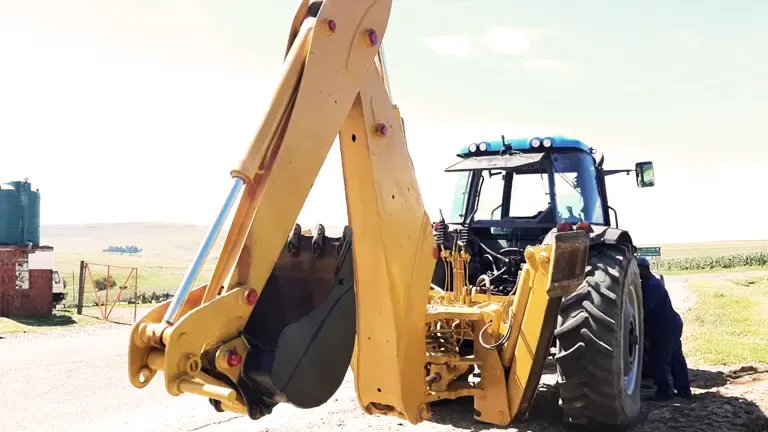
Key Features: Backhoes feature a large boom and a bucket driven by hydraulic cylinders. They can reach considerable depths, with some models capable of digging over 10 feet deep. This power and reach make them a formidable tool in your tractor attachment arsenal.
Review: Backhoes can significantly simplify tasks that would otherwise necessitate manual labor or a dedicated machine, providing substantial savings in terms of time and resources. They can also provide auxiliary benefits like improved drainage and soil mixing. However, backhoes can be a pricey investment and require a bit of practice to master their operation. Moreover, careless usage can cause land degradation.
3. Box Blades
Box blades are versatile tractor attachments that are primarily employed for grading and leveling land, although they can also serve other functions such as backfilling trenches or spreading materials like gravel or mulch.

Key Features: Box blades consist of a square, three-sided box, equipped with sharp, replaceable cutting edges on the front and back. Some models also incorporate scarifiers or ripper teeth to break up compacted ground before grading or leveling.
Review: Box blades prove to be a versatile tool, capable of handling a diverse range of tasks. They are relatively easy to use, even for novices, making them a common addition to a tractor-owner’s toolkit. Their replaceable cutting edges ensure longevity, while the addition of scarifiers increases their utility. However, for extremely large grading tasks or specialized grading requirements, a dedicated grader might be more effective.
4. Rotary Cutters
Rotary cutters, colloquially known as brush hogs or bush hogs, are utilized for cutting through dense vegetation including tall grass, brush, and even small trees.

Key Features: Rotary cutters usually comprise a large, heavy-duty cutting deck with one or more sharp blades. They are powered by the tractor’s PTO and can be adjusted for cutting height.
Review: Rotary cutters are an indispensable tool for managing overgrown or wild areas. They can handle tough vegetation that would easily dull or clog a traditional lawn mower. However, they are not meant for precise or aesthetic landscaping tasks and require careful handling due to their potential for throwing debris. Regular blade maintenance is also necessary to ensure optimum performance.
5. Front End Loaders
Front-end loaders are incredibly versatile attachments utilized for lifting, moving, and depositing heavy materials.

Key Features: Front-end loaders feature a large bucket connected to the tractor by two strong arms. The height and angle of the bucket can be controlled from the tractor seat, enabling precision in operations.
Review: Front-end loaders can dramatically reduce labor and time when it comes to tasks like moving soil, gravel, or heavy equipment. Their learning curve is relatively gentle compared to some other attachments, making them a popular choice. However, they can drastically alter the tractor’s center of gravity, necessitating caution in operation, especially on sloping ground.
6. Balers
Balers play a pivotal role in crop harvesting, particularly in the collection of straw, hay, and similar crops.

Key Features: These specialized machines come equipped with rollers or belts or both, which help in compressing the collected crop, shaping it into bales. Square balers produce small, easily manageable bales while round balers, though producing larger bales, offer the advantage of weather resistance.
Review: The importance of balers cannot be understated. They are particularly useful in efficient crop management by providing easy handling, transportation, and storage. Yet, purchasing a baler can be a significant investment, and the power requirement for their operation can be high.
7. Bucket Elevators
When it comes to vertical transportation of bulk materials such as grain or fertilizer, bucket elevators come in handy.

Key Features: They comprise a series of buckets attached to a chain or belt, complete with pulleys or sprockets situated at the top and bottom of the structure.
Review: Bucket elevators can be a game-changer for tasks requiring vertical lifting. Nevertheless, they require regular maintenance checks to prevent breakdowns.
8. Disc Harrows
For the cultivation of soil, especially in preparation for sowing seeds, disc harrows are an excellent tool.

Key Features: They incorporate steel or iron discs and the depth of cutting into the soil can be adjusted as per the requirements.
Review: Disc harrows play a significant role in soil management. However, excessive use or incorrect usage can contribute to soil compaction and erosion.
9. Hay Rakes
For collecting cut hay or straw into manageable rows or windrows for ease of baling, hay rakes are a farmer’s best friend.

Key Features: Hay rakes come in a variety of designs like wheel rakes, rotary rakes, and belt rakes. These designs help control the width and density of windrows.
Review: While hay rakes are critical for efficient baling, their usage requires a careful operation to avoid soil contamination and unwanted crop damage.
10. Mowers
A tractor-mounted mower is a versatile piece of equipment used for cutting grass and other low-growing plants.

Key Features: There are different types of mowers – rotary, flail, or drum – each designed for specific tasks and vegetation types.
Review: The choice of mower depends on the specific requirement at hand. The right mower can transform a grassland, lawn, or crop residue into a well-managed landscape.
11. Post Hole Diggers
For digging holes in the ground for fences, planting trees, or even geological exploration, post-hole diggers are ideal.

For digging holes in the ground for fences, planting trees, or even geological exploration, post-hole diggers are ideal.
Key Features: They consist of a power take-off (PTO)-driven auger, which drills into the ground, removing the drilled soil.
Review: Post hole diggers provide an efficient way of digging holes, saving significant time and labor. But they can find it challenging to operate in rocky soil or dense clay.
12. Spreaders
Spreaders are critical for distributing fertilizers, manure, or seeds evenly across a field.

Key Features: The spreaders come in two primary types – drop-style and broadcast-style. While the former drops the material directly beneath, the latter scatters the material over a wide area.
Review: Spreaders help in uniform growth of crops and reduce wastage of materials. But they require careful calibration for accurate operation.
13. Tillers
Tillers also discussed earlier in the context of rotary tillers, have other varieties like chisel and subsoiler tillers.

Review: These types penetrate deeper into the soil to break up hardpan layers. It aids in better root growth but requires more power.
14. Trailers
Tractor trailers are essential for transporting goods and materials across the farm.

Key Features: They come in various sizes and designs, including flatbed, box, and tipping trailers, to cater to different requirements.
Review: Trailers can be a boon for transporting heavy loads across a farm. However, handling them in confined spaces may require skilled driving.
15. Wagons
Wagons serve a similar purpose as trailers but are generally smaller and meant for lighter loads.

Key Features: They can be hitched directly to the tractor and are typically open-topped for easy loading and unloading.
Review: Wagons are an integral tool for smaller-scale transport tasks. They offer better maneuverability than trailers but have a smaller capacity.
Choosing the Right Tractor Attachment
Selecting the right tractor attachment isn’t just about purchasing the first shiny tool you lay eyes on. It’s about turning your tractor into a multi-functional beast that can tackle any task thrown its way, effectively and efficiently. Here’s how to navigate the sea of attachments and anchor on the one that suits your needs best:
- Assess Your Needs: Before you can identify the right attachment, you first need to pinpoint your requirements. Are you looking to sculpt the land, haul loads, or cultivate your garden? The task at hand plays a critical role in guiding your choice.
- Tractor’s Power and Size: You can’t haul a ship with a sailboat, right? Similarly, your tractor’s horsepower and physical dimensions determine what attachments it can effectively handle. Consult your tractor’s manual to understand its capabilities and limitations.
- Type of Hitch: The hitch is the interface between your tractor and its attachment. The most common types are the three-point hitch and the quick-attach system. Ensure the attachment you’re eyeing is compatible with your tractor’s hitch system.
- New vs Used: While new attachments come with a warranty and an assurance of pristine condition, used attachments can save you a considerable chunk of change. However, when purchasing used attachments, be vigilant about the wear and tear, and try to have them inspected before purchase.
- Brand Compatibility: While many attachments are universally compatible, some are brand-specific. Check to ensure the attachment you’re considering is suitable for your tractor’s make and model.
- Safety: Last but not least, safety is paramount. The attachment should be stable and have safety features to prevent accidents.
Conclusion
The choice of tractor attachments is vast and each brings unique capabilities and utilities. The right attachment can significantly enhance the productivity of your tractor, saving you time, labor, and often, cost. However, it is crucial to consider your specific requirements, the nature of your land, and your budget before investing in these tools. A wise choice of tractor attachments can truly redefine the boundaries of what your tractor can achieve.
Frequently Asked Questions
- What types of attachments can be added to a tractor?
There’s a wide variety of tractor attachments available, including loaders, backhoes, mowers, tillers, plows, spreaders, post hole diggers, buckets, bale spears, pallet forks, landscape rakes, harrows, grapples, and more. The specific attachment types your tractor can use will depend on its model and configuration. - How do I know which attachment fits my tractor?
Attachments are generally categorized by the horsepower needed to operate them effectively, the type of hitch on your tractor (like three-point hitch or quick-attach), and the physical dimensions of your tractor. Always check the manufacturer’s specifications and your tractor’s manual before purchasing an attachment. - Can I use the same attachment on different brands of tractors?
As long as the tractor and the attachment have compatible hitches and the tractor has sufficient power to operate the attachment, it’s typically possible to use attachments across different brands. However, certain attachments may be brand-specific. Always check compatibility before trying to interchange attachments. - What are PTO (Power Take Off) attachments and how do they work?
PTO attachments are tools that are powered by the tractor’s engine. The tractor’s PTO shaft transfers the tractor’s power to the attachment, enabling it to function. Examples of PTO attachments include mowers, tillers, and post-hole diggers. - What is a quick-attach system?
A quick-attach system allows for the easy and quick connection of various attachments. This system is a standard feature on many modern tractors, enabling operators to switch between different attachments without the need for additional tools or excessive manual labor. - Are there attachments for both the front and rear of the tractor?
Yes, there are attachments designed for both the front and rear of a tractor. Front-end attachments often include loaders, grapples, and buckets, while rear attachments can include mowers, tillers, plows, and sprayers. - What maintenance do tractor attachments require?
The maintenance of tractor attachments often involves regular cleaning, lubrication, and inspections for wear and tear. Specific maintenance tasks can vary based on the type of attachment and its use. - Can I build my own tractor attachments?
While it’s technically possible to build your own attachments if you have the necessary skills and equipment, it’s generally not recommended. Improperly built attachments could cause damage to your tractor, not perform as expected, or pose safety risks. - What is a three-point hitch?
A three-point hitch is a type of tractor hitch designed for attaching and stabilizing implements. The three points resemble a triangle and include the top center and the two lower hitch points. This design allows the tractor to carry the weight of the implement and control its lift and tilt. - What should I consider when buying used attachments? When buying used attachments, consider the condition (any visible damage, rust, or excessive wear), compatibility with your tractor, the reputation of the seller, and the price. It may also be worth having used attachments inspected by a professional before purchase.

David Murray
Forestry AuthorI'm David Murry, a forestry equipment specialist with a focus on chainsaw operation. With over 13 years of experience, I've honed my skills in operating and maintaining a wide range of machinery, from chainsaws to log splitters. My passion for the outdoors and commitment to sustainable forestry drive my work, which emphasizes safety, efficiency, and staying updated with industry advancements. Additionally, I'm dedicated to sharing my expertise and promoting environmental awareness within the forestry community.

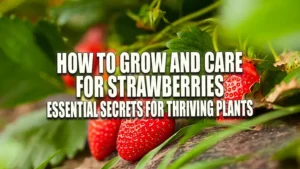
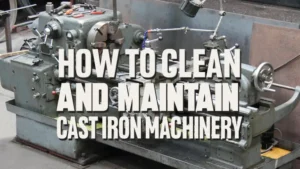
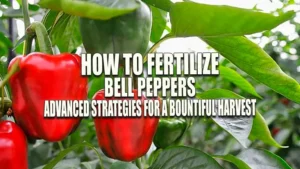


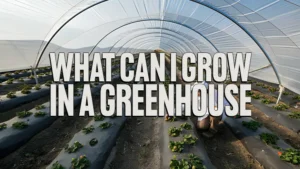

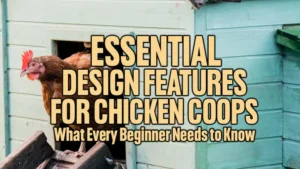
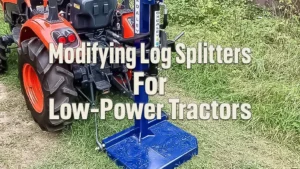
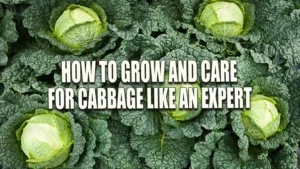
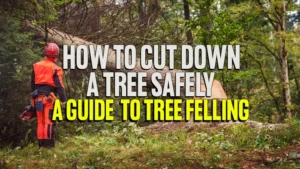

The article highlights the enduring appeal of older tractors for Midwest farmers, driven by factors like repairability, nostalgia, and affordability. While modern technology offers benefits, many farmers still rely on older models for their reliability and simplicity. The industry's incremental evolution contrasts with the transformative changes seen in the automotive sector, raising questions about when revolutionary advancements will make older tractors obsolete.
jerryrodan
March 10, 2024 7:43 pm